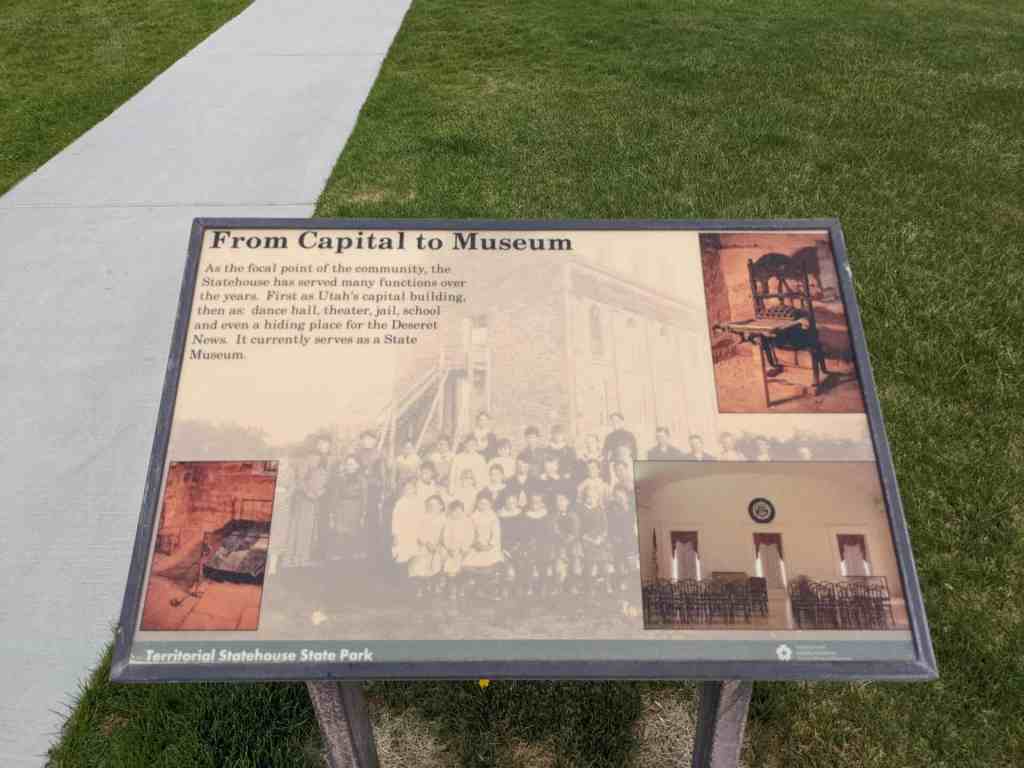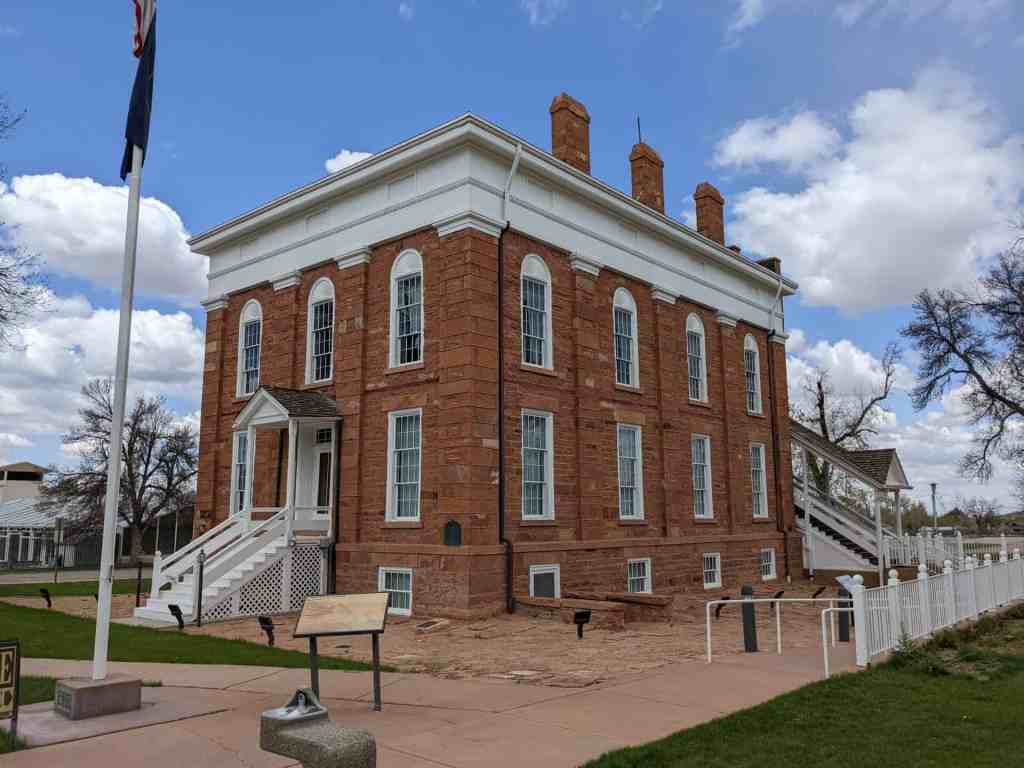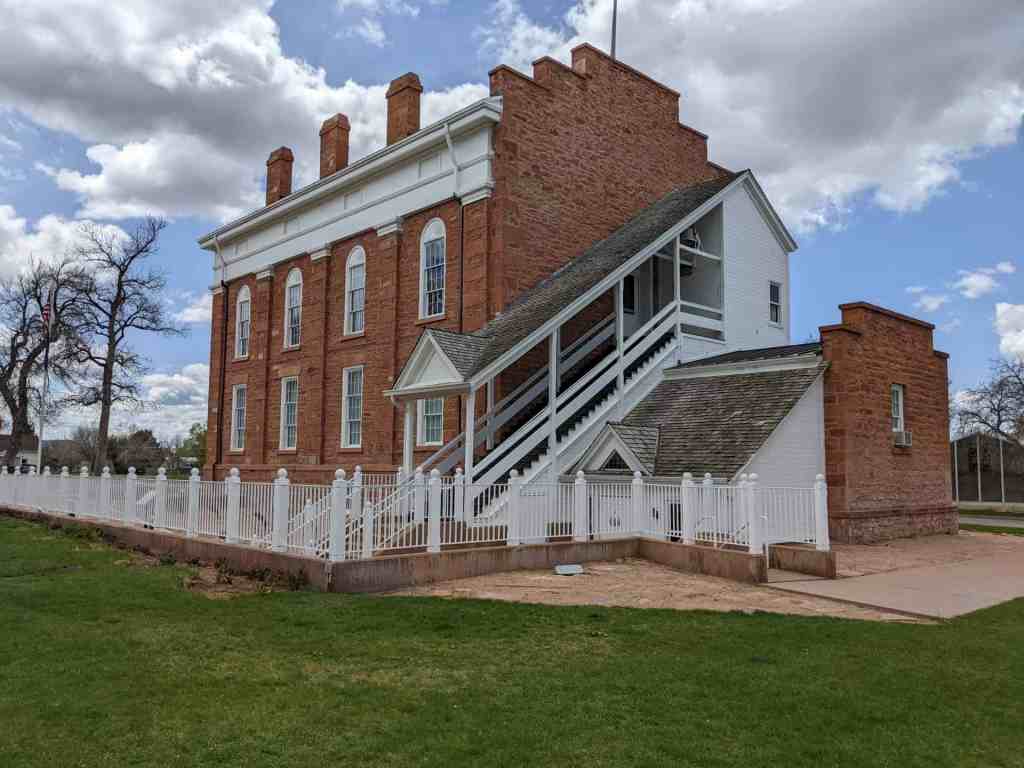
Utah Territorial Statehouse
Built from 1852 to 1855, the statehouse was initially intended as a larger structure, but only the south wing was completed before the project was abandoned due to lack of federal funding, and the Utah Territorial Legislature only met in the building once before the capital was moved to Salt Lake City in 1856.
Related:
- D.U.P. Marker #7 (located on the building)
- Land of the Yuta
- Utah’s State Parks (the statehouse is one of them)
The Utah Territorial Capitol is located at 50 West Capitol Street in Fillmore, Utah and was added to the National Historic Register (#70000625) on September 22, 1970.

Utah’s Territorial Capitol stands today as a monument to her early territorial history. It was located centrally in Utah by Brigham Young who planned to settle his “Saints’* throughout the territory, it was designed by one of Utah’s most important early architects, Truman O. Angell (who also designed the Salt Lake City Mormon Temple). Its construction was financed in part by federal monies, but later funds were withheld because of the Mormon War problems. The whole structure was never completed, nor did it serve long as Utah’s Territorial Capitol.
The Capitol site was selected October 29, 1851 by a Commission appointed by Territorial Governor Brigham Young. He accepted their plan in January, 1852, and recommended that the south wing be built immediately. Truman O. Angell served as Architect and William Felshaw as superintendent of construction. Not until spring, 1852, did the work of construction get underway. Red sandstone was quarried from the mountains east of Fillmore, and native hand-hewn timbers were hauled from Parowan, also, to build the structure.
In 1852, $20,000 were appropriated by the Federal Government for construction; later grants did not follow due to hostilities between the Mormons and the Federal Government. Construction progressed slowly, but by December, 1855, it was sufficiently complete to be dedicated and used by the Fifth Utah Territorial Legislature, They also held sessions at Fillmore in 1856 (6th), and 1858 (8th). The 1857 (7th) session met in Salt Lake City because of the impending crisis of Johnston’s Army, during the “Mormon War.” Later the building was used as a meeting hall, for offices, and social events, but eventually it fell into disuse. Through the good efforts of the Daughters of Utah Pioneers in the 1920’s, its restoration was effected. Governor George H. Dern turned the deed to the property over to the Daughters of Utah Pioneers in 1927, and on July 2k, 1930, a celebration was held at the old Capitol. Utah’s first State Park had come into being. Utah State Parks now owns and maintains and manages this as a museum, and park.

Built of red sandstone and local timbers between 1852-1855.
In the original plan for Utah’s Territorial Capitol, the main central mass was to be erected sixty feet square, with four side wjngs sixty feet by forty and three stories high. Over the main central mass, what was described as a “Moorish dome” was to be built. Only the south wing was completed. It consisted of three stories. The first and second floors contained eight rooms each, and the top floor a legislative chamber, about fifty-seven feet by thirty-seven feet, which was used between 1855-1858.
After abandonment of the Capitol by the Territorial Legislature, the building soon fell into disuse and decay, although it was used.
In 1927, through efforts of the Daughters of the Utah Pioneers, restoration of the building began. Work included a new copper roof, repainting new windows, doors as needed, replacing or repairing floors, plastering and painting walls. An annex and heating plant were added in 1932, with a $10,000 appropriation from the Utah State Legislature. Additional repairs and restoration have followed since then by the Utah State Parks and Recreation. Present condition is good.
The building is architecturally significant, only because it represents one wing of a massive structure planned but never completed. Many architects today describe the planned structure as an “architectural monster.” Its primary significance is historical and political.

































Love the photos and your commentary. I’ve driven past, and through, Fillmore many times, but never made much of an effort to stop and tour the area. I think it’s so cool that the stonemasons’ initials were left uncovered. It’s a great tribute to the men who did a great job.